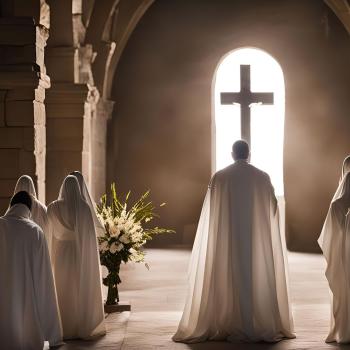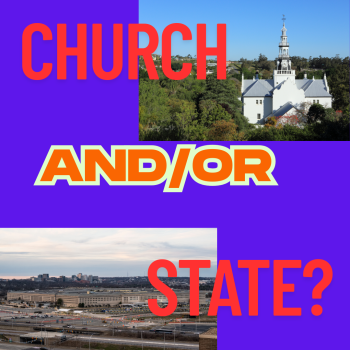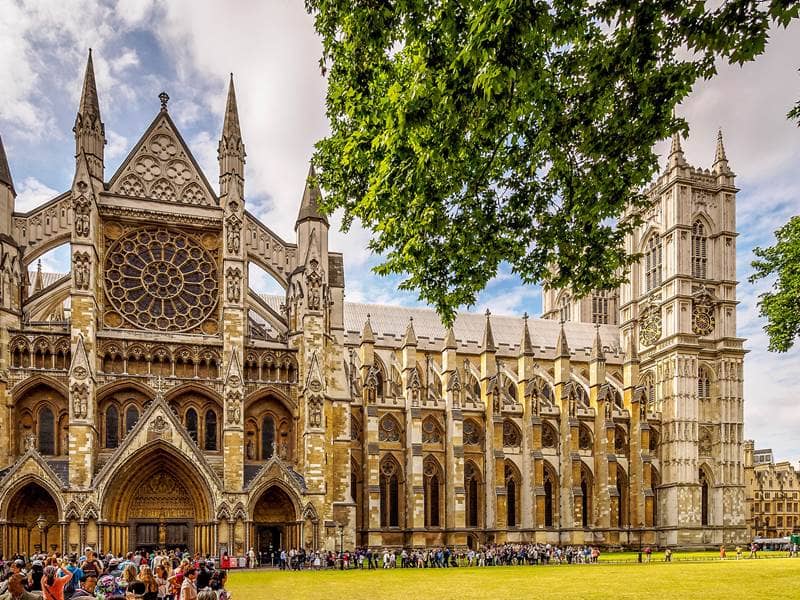
- Trending:
- Pope Leo Xiv
- |
- Israel
- |
- Trump
- |
- Social Justice
- |
- Peace
- |
- Love
The 100 Most Holy Places On Earth
Westminster Abbey

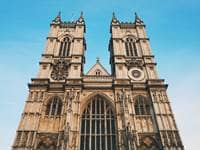
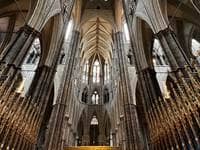
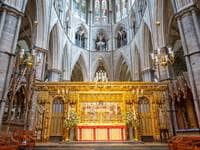
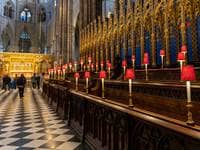
Also Known As:
Westminster Abbey
Collegiate Church of Saint Peter at Westminster
Associated Faiths:
While associated with the Anglican Church (or Church of England), Christians of all traditions typically reverence this site, and many non-Christian tourists visit.
Accessibility:
Open to visitors.
Annual visitors: 1,350,000
History
The Collegiate Church of Saint Peter at Westminster—more commonly known as Westminster Abbey—has been called the “most important shrine” in England. Nestled in the heart of England’s capital city, Westminster Abbey is unique in that it is the only Anglican church not subject to a Bishop, but only to the British monarch. It is a functioning house of worship, a mausoleum, a place of coronation, a reliquary, a museum, and a place of pilgrimage—all rolled into one.
Claims are that, on the site of the current edifice (most of which dates to the 13th century), there has been a church, at least as far back as the 8th century AD. Historians believe that Offa, King of Mercia, commissioned that first house of worship to be constructed on the site. Then, in the mid-11th century, King Edward the Confessor expanded the building—making it an abbey-church, and it became one of England’s most important monastic centers. In the 13th century, Edward’s church was replaced by the current structure—with construction starting in AD 1246. However, the twin-tower façade of the current Church was only competed in the second quarter of the 18th century.
Since 1066, when William the Conqueror was coronated in the Abbey, every single British monarch has been crowned there. Additionally, since Edward II rose to the throne (in AD 1308), every British sovereign has been coronated while sitting upon the famous “Coronation Chair”—a 13th century throne created for the purpose of anointing new Kings and Queens of the British Empire. Thus, the Collegiate Church of Saint Peter, and the throne it houses (in its ambulatory, near the tomb of King Henry V), have long been symbols of the authority, leadership, and history of the British people and their monarchy.
The Abbey is as much a mausoleum as it is a house of worship. Some 3,300 people are buried in Westminster Abbey. It houses the remains of 30 of Britain’s Kings and Queens. However, it is also the burial place of literary geniuses, scientists, composers, and other noteworthy Brits. Included in the list of the famous interred therein, are Handel, Kipling, Dickens, as well as Newton, Darwin, and Stephen Hawking. A veritable “Who’s Who” of Great Britian’s most important have made Westminster Abbey their final resting place.
Religious Significance
Simply by virtue of being a Christian church and, by most accounts, England’s most stunning and important place of worship, the Collegiate Church of Saint Peter at Westminster is “sacred space.” It is holy to Christians because of the sacraments offered therein. It is sacred politically, because of its consistent association with the British monarchy and their right to rule. It is sacrosanct to historians because of the relics it contains and the history those represent. And it is special to scientists because the remains of important scientific thinkers interred therein stands as a symbol for the potential harmony between faith and science—two fields so often at odds.
Aside from its many priceless treasures, the church at Westminster is the site of a number of important Christian relics. The most important of those is known as the “Relic of the Holy Blood.” As the name suggests, this is a vessel containing some of the blood of the crucified Christ. The container, traceable to the medieval period, was sent to King Henry III (in 1247) by Robert of Nantes (the Latin Patriarch of Jerusalem). Initially placed in London’s Church of the Holy Sepulcher, King Henry had it moved to Westminster Abbey—and hoped that it would make the church an important place of pilgrimage. The presence of something as holy as the shed blood of Jesus makes the edifice at Westminster a sacral site.
Westminster Abbey is home to the remains of no less than 30 past British monarchs. It is the perpetual seat of their enthronement. Because it is the place of the beginning (coronation) and end (burial) of the reign of many a British monarch, the Abbey symbolizes the sacred right to rule, as encapsulated in the divine-right theory of kingship. In the history of Britain, their sovereigns did not receive their authority from any human being, nor were they subject to any earthly authority. Rather, they derived their right to reign from God Himself. And like the Bishop’s chair in a cathedral which implies his divine right, Westminster is the home to the legendary “Coronation Chair”—upon which all British monarchs have sat during their coronations (since the beginning of the 14th century). That chair—connected to the monarch’s divine right—has beneath its seat a drawer which (until 1996) held the mystical “Stone of Scone.” The lore surrounding that stone suggested that it is one of the actual stones Jacob (or “Israel,” as God called him) used as a pillow when in Luz, as described in the biblical book of Genesis. Thus, the Abbey and its coronation throne are constant reminders that the Church and State in England can never truly be separated, because it is God Himself who has instituted both for the salvation of the world.
Westminster Abbey is an important piece of British and Christian history. One is instantly inspired and moved by its art and architecture. One senses the hallowed nature of the space when visiting the relics of some of the most accomplished humans to grace the face of this earth. One is sanctified by the sacraments offered therein. And, for believers, being in the presence of some of the very shed blood to which Christians look for salvation can be nothing less than spiritually transformative, provoking introspection and gratitude for the penitent pilgrim.






